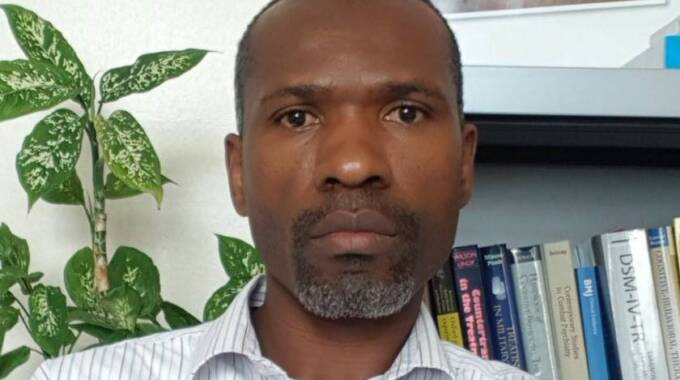
The Sunday Mail

Mertha Mo Nyamande
VIOLENCE and aggression — which include fire setting; homicide; murder; gender- based violence (GBV), for example, rape; and domestic violence (DV) — form critical parts of risk assessment in managing mental health disorders (MHDs) that bring about illness and other lasting ill effects.
It is important to separate MHDs and the issues they cause so as not to confuse them with mental illnesses.
These issues affect the self initially, for the psychological pain starts within, before it is externalised.
This pain then extends to others, when it becomes visible in physical form and other ways.
This is when they become issues that require intervention, and usually in crime.
Unfortunately, most initial interventions are punitive in nature due to poor understanding of the problem.
This exacerbates the pain, making the problem bigger.
This creates higher rates of recidivism.
Essentially, these behaviours are ways through which the individual tries to express to others how he or she is feeling within, in part, to raise attention in seeking help.
However, they are often misunderstood as attention-seeking behaviours and, in part, as “maladaptive” coping strategies.
So, whenever someone is becoming violent or aggressive, they are simply communicating how they are feeling inside, whether they understand it or not.
This requires sensitive and careful handling.
GBV and/or DV, on the other hand, are socially learnt behaviours that have been kept as secrets in families and communities.
They include rape.
Some of these abuses have become “cultural” as they rarely occur without the knowledge of families and neighbours, or communities.
Internalising the pain is often what leads to internal emotional turmoil and most mental disorders, addictions and other forms of deliberate self-harm and disability due to the individual’s distress.
Externalising it is often what affects others most, leading to violence in all forms.
The causes of violence and aggression are often deep-seated and unconscious to the individual, their families and communities.
They are rarely individualistic, unless in cases of organic/brain injury or infection.
Therefore, mental disorders are a shared misnomer but are usually displayed by certain individuals who are more sensitive to the concealed behaviours around them.
The violence displayed is not of the disorder itself, but frustrations caused by being ignored or intimidated, undermined, misunderstood and/or exclusion due to stigma.
In other cases, the violence is brought about by a depletion of essential vitamins that compromise the amygdala, leading to paranoia and persecutory hallucinations or delusions.
In others, clinical conditions like diabetes, insomnia and physical pain can cause irritability.
Boredom also becomes a feature where poorly structured services create situations where people seek to entertain or occupy themselves with behaviours less likely to be healthy or progressive.
Peer pressure, self-esteem, the need to fit in the crowd and mob psychology also play a part in how some of these behaviours present themselves.
The reason for most of these behaviours is primitive in that, when an individual loses their conditioned reasoning or mental capacity as per modern expectations, they often resort to basic survival and “barbarian” instincts, which today’s societies regard as disorders.
Violence is often a destructive behaviour that seeks to force something where it is not naturally suitable.
GBV is a typical example, where mostly men exploit women and children into meeting their needs against the rights of these vulnerable groups.
Elderly people are not the only ones endowed with knowledge or wisdom.
The young can also contribute ideas that can help solve problems between generations due to knowledge or information gaps.
There is need to recognise the frustrations brought about by poor understanding of various needs at different developmental stages, from both psychosexual and social learning theories.
These misinterpretations leave gaps in knowledge that fuel the extreme behaviours exhibited in societies.
Considering the views and needs of all ages brings about more inclusive and tolerant societies.
Forensic psychology can shed more light on these issues than psychiatry has done.
It is critical that social policies review cultural practices into what is evolutionary and diverse, as we merge into a global community.
◆◆ ◆◆Mertha Mo Nyamande is a psychotherapist.
He can be contacted on: [email protected] or @ www.i-wellbeing.weebly.com



